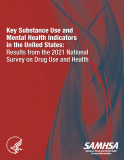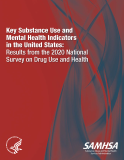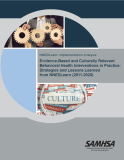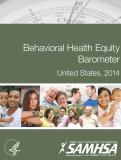
This report provides an update on a series of topics focusing on substance use and mental health (collectively referred to as behavioral health) in the United States. SAMHSA selected specific topics and indicators in this report to represent a cross-section of the key behavioral health indicators that are assessed in SAMHSA data collections, including NSDUH. This report is intended to provide a concise, reader-friendly summary of key behavioral health measures for lay and professional audiences.
Units per Product
Download
Behavioral Health Equity Report 2021
File Type: PDF
File Size: 1.38 MB







